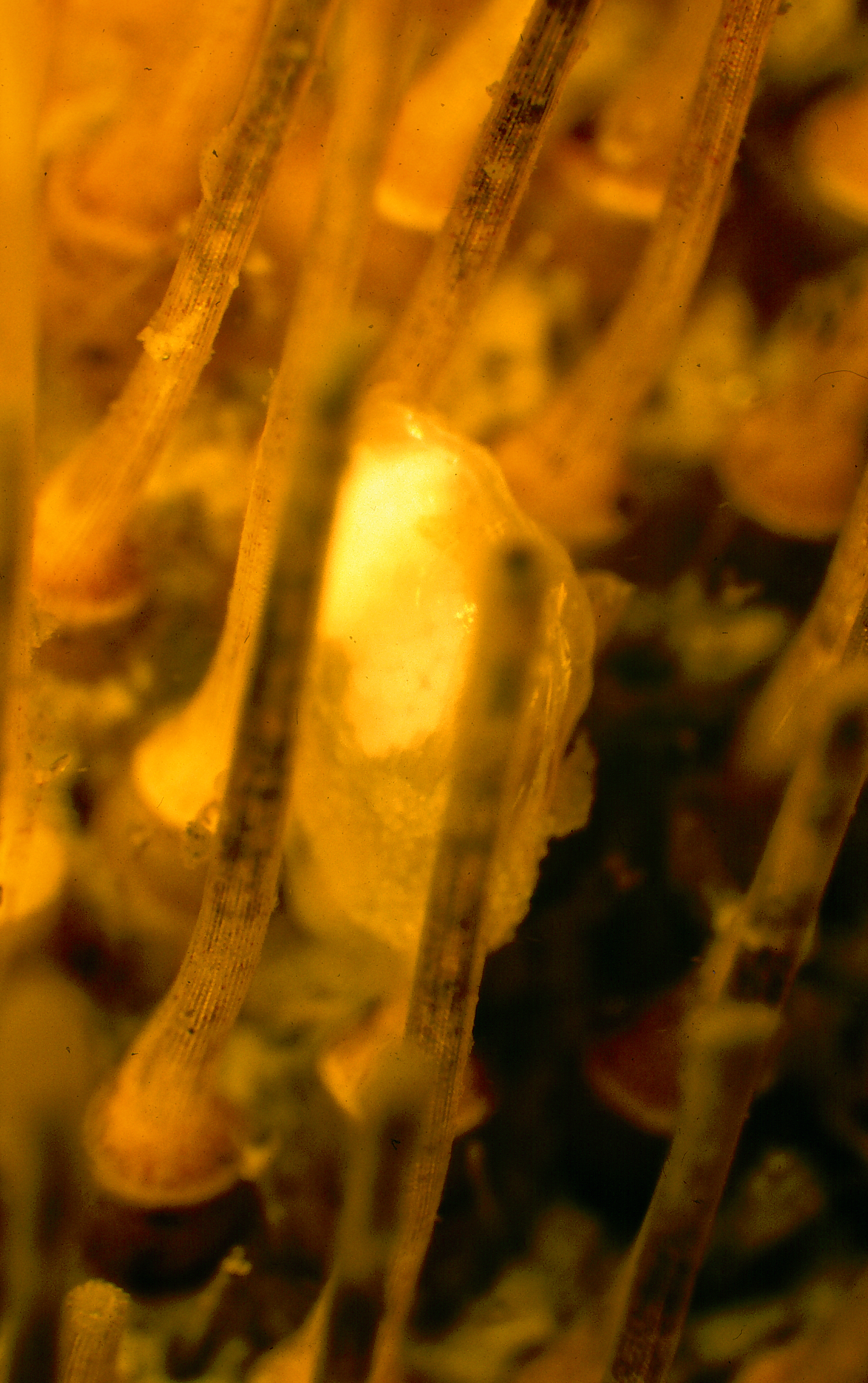Here's Waldo! Strange New Clam Species Is Found

A strange creature with a delicate, translucent shell and long, slender tentacles has been recognized as a new species, researchers say.
The unusual beast, Waldo arthuri, is a type of tiny clam that lurks among the spines of sea urchins.
It was discovered independently by marine invertebrate zoologists Paul Valentich-Scott of the Santa Barbara Museum of Natural History in California and Diarmaid Ó Foighil of the University of Michigan. Valentich-Scott stumbled upon his odd specimens off the coast of Santa Barbara and in Morro Bay, Calif., while Ó Foighil unearthed his while trawling for life off Vancouver Island, British Columbia.
"It's alienlike in appearance," Valentich-Scott told LiveScience. "It's got strange long tentacles, and although it's a clam, like many of its relatives it crawls like a snail on its foot. It has a minimalist shell, so it's pushing toward a slug look."
At a conference in 1989, Valentich-Scott and Ó Foighil were chatting about new discoveries when they realized they had each discovered what they then suspected was a new species of clam, at the same time, but more than 1,000 miles (1,600 kilometers) apart. Neither scientist could identify the creature.
Since then, the scientists worked to confirm what type of animal it was, how it might be related to others, and whether it was truly a new species.
"We never anticipated this would be such a long project," Valentich-Scott said. "But every time we started in one direction we hit a wall and needed to begin again."
Get the world’s most fascinating discoveries delivered straight to your inbox.
The novel clam is only about 0.2 inches (5 millimeters) long, or about three times the size of the head of a pin. The fragility and tiny size of this clam made it difficult to analyze properly. Eventually, Ó Foighil was able to collect and observe living specimens of the new species.
"We were looking closely at sea urchins and noticed something crawling on the fine spines covering the urchin body," Ó Foighil said. "We were amazed to see that there were minute clams crawling all over the sea urchin."
The clam lives between the spines of the heart urchin (Brisaster latifrons). Ultimately, the scientists discovered this creature is related to species within a genus known as Waldo, whose members also often live on urchins.
"We found it ironic that the new species was in the genus Waldo and just couldn't help but ask, 'Where's Waldo?'" Valentich-Scott said.
Analysis of the clam's DNA revealed it was genetically distinct from other species.
"We were surprised to find that its closest relative was from the South Atlantic Ocean, off Argentina," said researcher Jingchun Li, a clam DNA specialist at the University of Michigan, Ann Arbor.
The new species rears its young in a brood, with parents sheltering unborn progeny on their gills. Unlike most of its relatives, the offspring do not live a free-swimming life after they are born — they apparently go straight to crawling on urchins.
The symbiotic relationship between the strange clam and its urchin host remains a puzzle.
"What they get out of the relationship is pretty mysterious," Valentich-Scott said. "The urchin might provide shelter to the clam, and there might be food flowing in the water to the urchin that the clam might be able to filter out and benefit from. What the clam gives to its host, if anything, is pretty unknown."
The scientists detailed their findings July 12 in the journal ZooKeys.
Follow LiveScience @livescience, Facebook &Google+. Original article on LiveScience.com.



